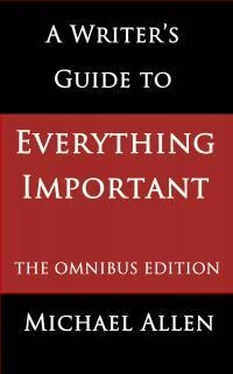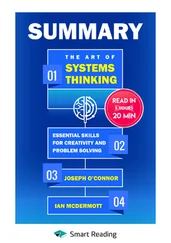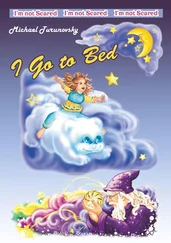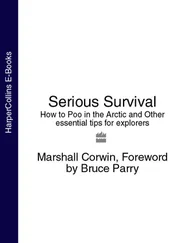If you are at all serious about improving your writing skills, it would be a smart move, at this stage, to find a copy of your favourite novel (or movie) and study it in some detail.
Read, or skim through, the book again. It will be divided, probably, into chapters or divisions of some sort. Consider each of these. If the book held your attention (and if it’s your favourite it must have done), what was it in each section that fascinated you? What emotion did you feel? Name the emotion and write it down. And then, when you had completed the book, what was the major, overall emotional effect on you? Did you end the book laughing? Or did it leave you sad and reflective?
What you will realise, if you do this exercise, is that, deliberately or otherwise, the author created in you a series of emotions which kept you reading. You did not, in this case, chuck the book aside with a cry of Boring! or Revolting! You were held.
Once you have identified your emotions, you might then care to look back and try to decide how these emotions were created. What was it in the story which caused you to feel anxiety about whether the heroine would survive? Why did you feel so angry about the way she was treated? Why were your hopes raised when she met that nice man in the dark suit?
Reading a novel, or studying a movie, in this way will give you a new insight into what you are trying to do when you yourself write fiction. Or what you should be trying to do, in my opinion.
On the assumption that you are prepared to agree with me, at least for the present, about what constitutes a sound purpose, you now have a plan of action; of sorts.
You have decided, perhaps, to write a novel. Let’s say a piece of romantic fiction.
You will have read, presumably, dozens if not thousands of romantic novels before you start. (If you haven’t read widely in your chosen field then I would suggest that you rethink what you are doing from stage one.)
Following my suggestions, you will have analysed at least one or two novels, to identify, with the aid of my list, the typical emotions which popular and successful romantic novels generate. You have written down those emotions and you have the list in front of you.
First, choose the key emotion – the overall effect which you are trying to achieve, at the end of the book.
Personally I have never written a truly romantic novel, and I don’t read many in that genre, but I guess that the intended emotion of most of them could be expressed more or less as follows:
A sense of great satisfaction and happiness, tinged with relief, that Jane (your heroine) has at last found a man with whom she can look forward to a lifelong love relationship.
Then, having determined your overall aim, you need to look at the list of emotions which (you have decided) the body of your book needs to contain, and then you proceed to invent or devise incidents which will produce these emotions. In the words of Poe, ‘such incidents... as may best aid... in establishing this preconceived effect....’
This is not a book about the technique of fiction, so I am not going to say very much more about plotting here. However, the vital point for you to understand is that all plotting must be conducted with the creation of emotion in mind. That is what must colour and control your selection of plot events. (Otherwise you are likely to be wasting your tine.)
There is room here, however, for me give you one or two tips on technique.
Don’t be too concerned about originality. This is, in my opinion, a much over-rated virtue in fiction and the arts generally. Most punters don’t like originality. It upsets them. They don’t know what the hell is going on. A hoary old plot device is often perfectly acceptable if you dress it up in new clothes.
For example, when I saw the film Titanic it seemed to me that some of the plot twists were so old and grey that they had probably been used in stories which the crew of Noah’s ark told to each other. But there were, as a newspaper report which I have just read remarked, ‘crowds of teenagers queuing up to see the film again, excitedly telling each other how much they were going to cry.’ For these teenagers, the tried and tested plot devices were new, fresh, and profoundly effective.
Another important point, for novelists particularly, is that it does no good at all to name an emotion in the text. If, for instance, your heroine is all alone at home on a dark night when a murderer has escaped from jail, and the lights go out, it is no use telling the reader that ‘fear gripped Jane’s heart.’ That will achieve nothing.
What you have to do, with your heroine in such a perilous circumstance, is describe to the reader the physical response to the emotion which Jane and the reader (you hope) are experiencing. ‘Jane’s heart began to pound so hard that it threatened to burst out of her chest. Her hands went cold and she found it hard to breathe.’
Yes, I know that’s terribly hackneyed, and I’m sure you can do so much better. And that’s what a writer has to do, you see; she has to find new, fresh ways to inject life into what is often very familiar and hackneyed material.
Fortunately for all of us, new punters are coming along all the time. The orchestra may be playing that Beethoven symphony for the four-hundredth time – but somebody in the audience is hearing it for the first time, and they are absolutely entranced.
Another useful piece of technique, which was emphasised by Thomas Uzzell, is that the only interesting response to a stimulus is the considered response.
Suppose you are writing a thriller, and you have followed Raymond Chandler’s useful advice: when in doubt, have a man come through the door with a gun in his hand.
In real life, a bank clerk faced with this problem might freeze. She might stand there, paralysed, like a rabbit caught in the headlights of a car. This reaction is not really interesting; neither does it reveal character. It might, of course, be acceptable for a minor character to behave in this way, but not one of your major players.
Another uninteresting and uninvolving reaction to danger is the panic response. The gunman comes in and the bank clerk starts to scream; she falls on the floor, and has a hysterical fit. Sorry, the punter isn’t interested. In real life we would all, I hope, be sympathetic, but in a book, forget it.
The only response which will interest the reader is the considered response. The gunman appears, and our heroine the bank clerk is horrified and frightened. But we don’t just say that she is horrified and frightened. What we do is describe her shortness of breath, the sudden lack of blood supply to her cheeks, the trembling of her knees. And then we describe how she starts to think. Can she reach that alarm button? If the gunman sees her will he shoot? She feels fear, which we describe through her physical reactions, and she thinks about what is the right thing to do – and, although it’s dangerous, she does it.
Write that scene in the right way, and your punter will be held, will feel sympathetic emotion, and will be impressed by your heroine’s character.
Analysts of drama often insist that there must be conflict in every scene. Unfortunately, this all too often leads to scenes in which two characters stand toe to toe and shout at each other. To my mind, that is not very interesting either.
Playwrights and screenwriters would be much better advised, in my opinion, to concentrate on writing dialogue which reflects, as fully as possible, the thinking and the internal struggle which is going on in the mind of the characters who are involved in the action of the play.
To summarise: Uzzell advises that, if a writer wishes to produce emotion in a reader of fiction, she should do the following:
Читать дальше












